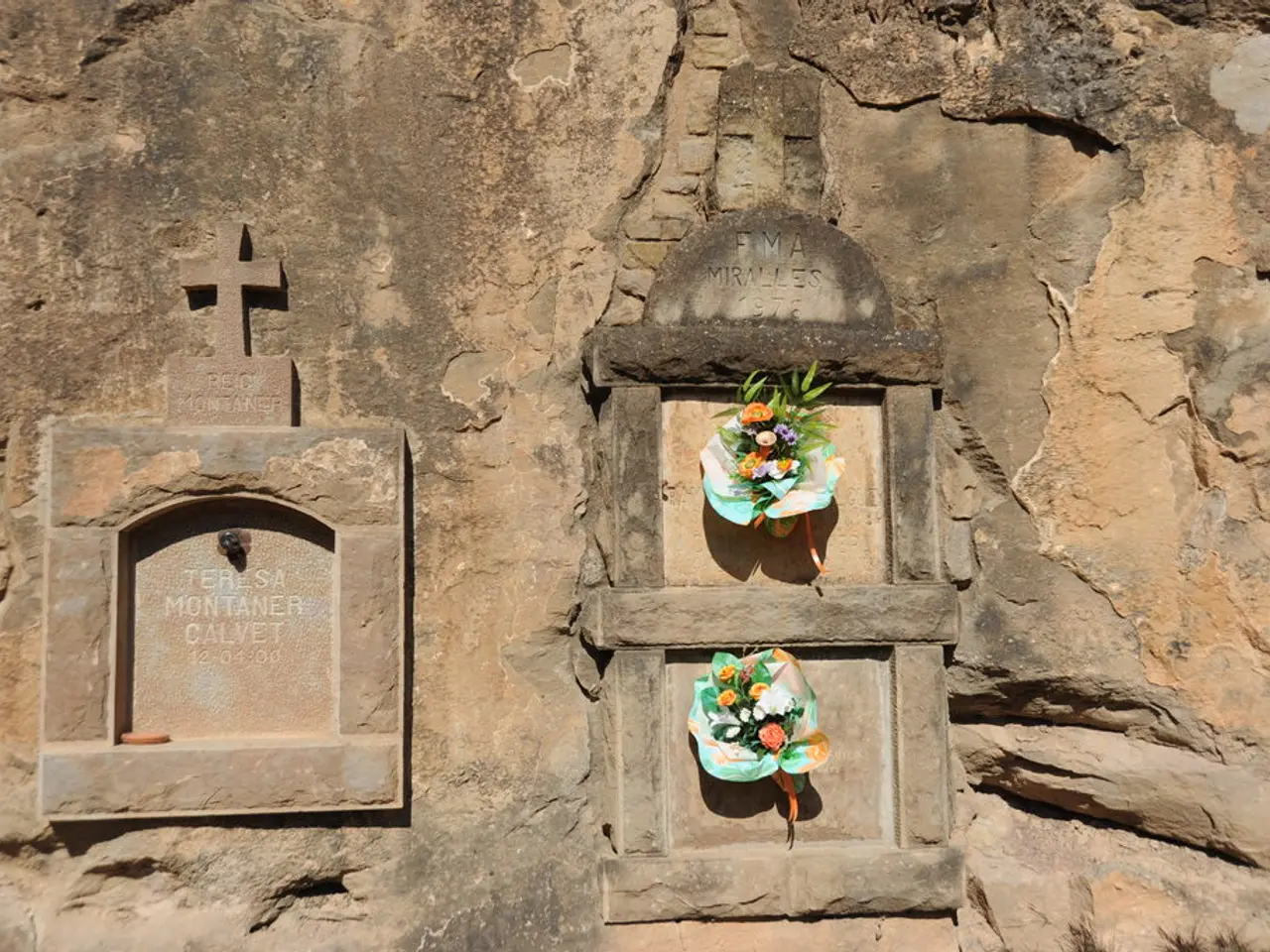Majestic burial sites of royals across Europe
In Europe, the grandeur of royal power continues to resonate centuries after its construction, with elaborate tombs and mausoleums standing as permanent monuments to the divine right, political dominance, and cosmic significance of monarchs. These structures were not just resting places but grand statements of power that transcended life, showcasing control over death and the afterlife.
These tombs served as strategic representations of power, merging artistry, mythology, religion, and politics to eternally cement the rule of the monarchy and legitimize their legacy beyond mortality. They were deliberate political tools, maintaining the image of an unbroken, divine monarchy through death.
Monumental architecture acted as a "resurrection machine," symbolizing a ruler’s guaranteed passage to the afterlife, reinforcing their elevated status beyond death. Elaborate designs, richly adorned with sculptures depicting battles, mythical creatures, and ritualistic ceremonies, blended mythology, politics, and religious symbolism to demonstrate dominance and divine favor.
Visual displays of power and dominance were conveyed through the use of expensive materials like white marble and detailed carvings of lions, warriors, and ritual scenes. These tombs were not only glorifications of the deceased monarch but also tangible reminders of a dynasty’s lasting legacy and their unchallengeable supremacy.
Sacred and political symbolism was integrated into burial practices, with elaborate burials often including animal sacrifices and ritualistic elements. This intertwining of politics, religion, and death ritualized power, making the tomb a central piece of royal propaganda.
Royal tombs also served as places where royal lineages were visually and ceremonially celebrated, ensuring public recognition and respect. Portraits, inscriptions, and careful preservation of tombs were used to remind subjects and rivals alike of the royal family’s longevity, strength, and sacred mandate.
Examples of this can be seen across Europe, with the Church of the Holy Apostles in Constantinople symbolizing the Christianized divine authority of Emperor Constantine and his dynasty. The tomb’s prominence solidified his legacy as a divinely appointed leader uniting imperial and religious power.
In modern times, these tombs continue to attract visitors, generating substantial economic benefits for their host cities and countries. The Invalides tomb in Paris, constructed at the end of the 17th century by Jules-Hardouin Mansart, features military artifacts, battle paintings, and imperial regalia.
However, some of Europe's most spectacular royal tombs receive relatively little attention despite their architectural and historical significance. The Bonaparte family mausoleum in Hampshire demonstrates how royal burial traditions adapted to changing political circumstances.
Visiting these tombs offers unique opportunities to witness power made manifest in stone, metal, and artistic vision. The visitor experience at major royal tombs often includes multimedia presentations, guided tours, and interactive exhibits.
Many architectural elements now considered standard in European church and palace design originated in royal tomb construction. Maintaining centuries-old royal tombs requires constant attention and substantial financial investment.
The Habsburg dynasty, in particular, perfected the art of dynastic tomb construction, with their tombs typically featuring multiple family members in elaborate group arrangements.
The awe and respect that visitors still feel when encountering these tombs testify to the enduring power of well-crafted political theater. These monuments, while serving as final resting places, continue to rule in death, reminding us of the power of art, myth, and politics in shaping history.
- The grandeur of royal power, as illustrated by elaborate tombs and mausoleums in Europe, often served as deliberate political tools, merging artistry, mythology, religion, and politics to eternally cement the rule of the monarchy and legitimize their legacy beyond mortality.
- Major royal tombs, such as the Invalides tomb in Paris and the Bonaparte family mausoleum in Hampshire, while functioning as final resting places, continue to rule in death, offering unique opportunities to witness power made manifest in stone, metal, and artistic vision, reminding us of the power of art, myth, and politics in shaping history.







